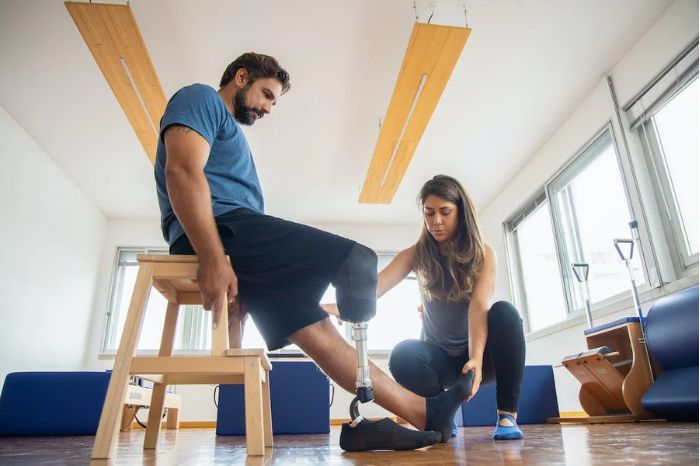
No one likes to wait, whether it’s at the bank, the local café, or at airport security. But with waiting lists for therapists in some areas of the country blowing out to weeks and even months, queueing to see a provider is a reality for participants in the National Disability Insurance Scheme (NDIS).
That’s why we asked three sector professionals for their tips on how to get to the top of the waitlist faster, as well as recommendations on how to progress towards your goals while you wait.
Lean in and learn from their practical advice – and hopefully speed up the process for securing those much-needed appointments!
Katie McKenzie recently swapped a career as an early childhood partner – where she regularly connected people to service providers – to join My Plan Manager’s Community Engagement & Partnerships team.
It’s against that backdrop that she confirms that waitlists for allied health services can range from a few weeks to well over a year. But she says there are several easy-to-adopt strategies available to help participants to keep moving forward.
“I’ve seen families accessing free, short term therapeutic intervention through schools, early years centres, community allied health centres, and non-for-profit organisations whilst they’re on private waitlists for NDIS-funded supports,” says Katie.
“I’ve seen families promoting their child’s development at home with strategies they’ve learnt through videos and online information sessions made available to them whilst they’re waitlisted. These resources are often not readily available on websites and may require a link from a service provider.
“And I’ve seen families attend local inclusive playgroups and library sessions. Both provide children with opportunities to build new skills and have fun doing it.”
Although Katie’s tips are child-focused, they can easily be adjusted to meet the needs of adults with disability too.
She suggests looking at the mainstream and community supports available in your area and recommends getting in touch with the National Disability Insurance Agency (NDIA) if you’re worried about losing funding because you’ve been unable to use it while waiting to access supports.
“It’s unlikely that you’ll lose funding due to circumstances that are beyond your control,” says Katie. “You might also receive some extra support to locate services with availability.”
With a wide range of providers under one roof, Ability Action Australia is familiar with the tips and tricks NDIS participants use to cut down wait times and use their funding more efficiently.
The business’ Relationships Manager, Joshua Preston, says it starts with using your support needs and goals to inform the delivery of allied health services.
With some supports able to be delivered by providers across a number of disciplines – from occupational therapy through to physiotherapy and exercise physiology – Joshua says savvy clients leverage the overlap of service to their advantage.
“If an allied health provider has immediate capacity for physiotherapy or exercise physiology, and there’s a 12-week wait time for occupational therapy, services can commence with the physiotherapist or exercise physiologist until the occupational therapist becomes available,” says Joshua.
So, if you’re up against a queue, speak to your provider (especially if they operate within a multidisciplinary practice) to see if one of their colleagues or peers may be able to support you while you wait for them to become available.
A lot of people don’t know that telehealth – which removes the need for a face-to-face appointment – can be useful when there are long waitlists in your area.
“In a situation where face-to-face is preferred, but telehealth is still suitable, work with the allied health provider to create a plan where telehealth is used initially until there’s availability for in-person supports,” says Joshua.
Alternatively, if age, support needs or other factors mean telehealth services just won’t cut it, an alternative therapeutic model based on parent or caregiver coaching, rather than direct intervention with the participant, can be an effective option.
Jemma Grunsell-Kerr, Director at Sydney-based support coordination provider, Marli and Moe, agrees.
As the head of a team of support coordinators, Jemma is all too familiar with the impact that provider wait times have on NDIS participants, and together with her team, she’s learnt the tricks to overcome them.
“If there’s a queue, a participant could ask their provider if they could get into a telehealth session to be seen faster,” says Jemma.
She’s also seen people take advantage of the shorter wait times that come when seeking assessments and reports, rather than an ongoing program of therapy, and says some participants use their support workers to implement recommendations made by practitioners following an initial assessment.
Therapy assistants and informal supports are also used to assist people to implement therapeutic strategies while they wait for allied health providers to become available.
If a participant is younger than seven with developmental delay or younger than nine with disability, they may be able to access early childhood intervention supports through a key worker – like an early childhood special educator or paediatric allied health professional – who will work alongside the participant, their family members and carers.
When the waitlists for allied health services are long, Joshua suggests asking if a key worker is available.
“To achieve what’s needed for a participant, a key worker forms a multidisciplinary team, where they collaborate with specialists, like occupational therapists and speech therapists, then implement the therapeutic interventions and coordinate all reporting,” he says.
Allied health professionals are well connected and often know other local providers, and Joshua recommends tapping into that knowledge base to get the supports you’re after.
“Don’t hesitate to ask a provider that has a long waitlist if they know of other local providers with capacity,” he says. “Most of the time, providers will be more than happy to collaborate and refer to one another so participants can receive the support they need in a timely manner.”
He also suggests approaching educational institutions, such as universities, which often offer student-led clinical services that are simpler to access than private providers.
Jemma also encourages participants and support coordinators to follow up contact with service providers after a referral has been made, to keep the participant’s name top of mind.
“I contacted a practitioner directly on LinkedIn who I had no connection with after a referral was put in. That sparked them to check in with the intake team and the referral was fast tracked to get the initial booking scheduled,” she says.
Depending on the complexity of a participant’s needs, or whether they’re in a crisis and require time-sensitive supports, some providers have extra provisions in place or are able to escalate referrals due to priority requirements.
“If a participant’s in a crisis and doesn’t have a support coordinator, they can call their provider to explain their situation to potentially escalate supports,” says Jemma. “This is a great strategy.”
”A participant could also request assistance from their local area coordinator, early childhood partner, or NDIA planner regarding this, plus any other service providers they’re currently engaged with.”
Jemma says health and hospital engagement pathways can also be explored as an interim measure.
“For example, if a participant is linked with a certain section of a hospital, such as the brain injury clinic, they can see therapeutic supports through the health system within the clinic at the hospital location,” she says.
And here’s a hack a lot of participants don’t know about – there are health care and mental health care plans available through a doctor’s referral that can be used for a small number of allied health sessions. The plans can assist with engaging both registered and unregistered providers at a reasonable out of pocket cost.
Typically, Agency-managed participants can only see providers who are NDIA registered, but if they’ve found an unregistered provider that has capacity to support them in a shorter timeframe, they can ask that the Improved Daily Living category in their plan be plan managed so they can access a broader range of providers.
“If the non-registered company provides services through Medicare, the participant can ask their doctor to provide an allied health plan or a mental health care plan in the interim for capped sessions,” says Jemma.
Jemma also says providers should consider the individual circumstances and needs of each participant. She recommends case conferencing with the participant, their support coordinator, their multidisciplinary support team, and informal supports to identify strategies to get things moving.
“There are always options for service providers to get creative with things and have stakeholder or multidisciplinary catch ups (if other services are engaged) to see what they could do to fill the gaps of other services they’re waiting a long time for, such as charity or community supports that could be options,” she says.
Katie told us that, in a deep sea of providers, finding the right one often starts with a simple internet search.
“You’ll find NDIS platforms such as Kinora (created by My Plan Manager), Kynd and Kismet that can connect you directly to service providers,” says Katie. “There are also service directories such as Health Direct, Clickability, and Disability Support Guide that list information and contact details for thousands of allied health providers.”
“Or you could use the ‘find a therapist’ search function on official allied health websites such as Speech Pathology Australia and Occupational Therapy Australia.”
To finish on a bang, here are Katie’s top three tips for getting to the top of the waitlist quickly.
Tip #1: Different waitlists move at different speeds. Add yourself or your child to more than one.
Tip #2: Remember the adage ‘the squeaky wheel gets the oil’. Don’t just wait. Regularly check in with service providers.
Tip #3: Watch for new allied health services popping up in your area. New services can have shorter waitlists.
And a bonus tip if you have or care for a child in the NDIS: Not everyone has a support coordinator, but if you do, they can open up doors to help you to receive therapies quicker.
If you have a small support coordination budget, you can lean on an early childhood partner instead – they should be able to help you access therapies quicker and their support doesn’t cost you anything.


